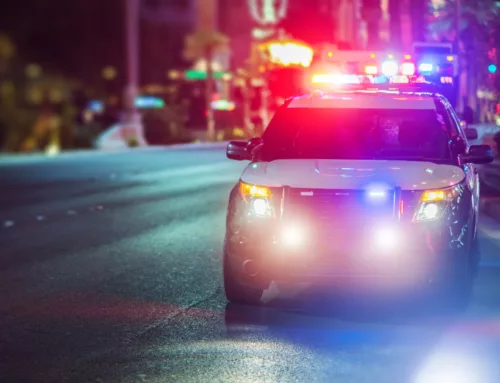Introduction to Surveillance Cameras and Crime Prevention in San Antonio Neighborhoods
Surveillance cameras have become an increasingly common sight in neighborhoods across San Antonio and other urban areas worldwide. These devices play a crucial role in enhancing security and deterring criminal activities. The primary function of surveillance cameras is to monitor and record activities within their field of view, providing real-time video feeds or storing footage for later review.
San Antonio, like many large cities, faces various safety and security challenges. Integrating surveillance cameras into neighborhood security strategies has proven to be an effective measure in addressing these challenges. By continuously monitoring public and private spaces, surveillance cameras offer several benefits that contribute to overall crime prevention efforts.
First and foremost, surveillance cameras serve as a deterrent to potential criminals. The presence of visible cameras can discourage individuals from engaging in illegal activities. Studies have shown that areas with prominent surveillance systems often experience lower rates of crime, as offenders are less likely to act when they know they are being watched.
Secondly, surveillance cameras are valuable tools for law enforcement agencies. They provide objective evidence that can be used in investigations and legal proceedings. Recorded footage can help identify suspects, corroborate witness statements, and establish timelines of criminal events. This information is vital in solving crimes and securing convictions in court.
Another critical aspect of surveillance cameras is their ability to enhance the rapid response capability of law enforcement. Real-time monitoring allows for immediate alerts to police or security personnel when suspicious activities are detected. This enables quicker intervention and increases the chances of preventing crimes before they escalate.
Furthermore, community involvement in surveillance initiatives can lead to more effective crime prevention. Neighborhood watch programs and community policing efforts often incorporate surveillance cameras as part of their strategies. Residents and local businesses can collaborate with law enforcement to create a network of surveillance coverage, improving overall safety and fostering a sense of collective responsibility.
In summary, surveillance cameras are a key component in the fight against crime in San Antonio neighborhoods. Their ability to deter criminal behavior, provide credible evidence, and facilitate rapid response makes them indispensable in modern security frameworks. By leveraging these technologies, communities can work together to create safer environments for all residents.
Understanding Crime Trends in San Antonio: A Statistical Overview
San Antonio, like many urban areas, has its own set of crime challenges. According to the Federal Bureau of Investigation’s (FBI) Uniform Crime Reporting (UCR) Program, San Antonio has experienced fluctuations in crime rates over the years, with certain trends highlighting key areas of concern.
In 2020, the San Antonio Police Department (SAPD) reported an increase in violent crimes, including homicide and aggravated assaults. Specifically, there were 130 homicides reported in 2020, up from 105 in 2019. Aggravated assaults saw an increase from 8,254 incidents in 2019 to 9,547 in 2020. Conversely, property crimes, such as burglary, larceny, and motor vehicle theft, have shown a general decline over the same period. Burglary cases dropped from 9,065 in 2019 to 7,856 in 2020.
A closer examination reveals that certain neighborhoods in San Antonio are more prone to specific types of crime. For example, areas with higher rates of poverty and unemployment often see more violent crimes, whereas more affluent neighborhoods might experience a higher rate of property crimes. This geographic crime distribution is crucial for understanding where surveillance cameras can be most effectively deployed.
Analyzing data from the National Incident-Based Reporting System (NIBRS), we find that incidents of theft and vandalism are particularly high in commercial areas. In 2020, over 22,000 theft incidents were reported, making theft the most common crime type in San Antonio. These statistics underscore the relevance of targeted surveillance efforts in areas most susceptible to specific criminal activities.
Moreover, San Antonio’s crime rates are influenced by broader sociocultural factors, including economic disparities and population density. The U.S. Census Bureau noted that the city’s population grew by over 10% from 2010 to 2020. This population surge can strain law enforcement resources and create pockets of higher crime rates.
Understanding these crime trends is essential for developing effective prevention strategies. Data-driven insights allow law enforcement to allocate resources more efficiently and create tailored crime prevention programs. For instance, deploying surveillance cameras in high-crime areas can serve as a proactive measure to deter potential offenders and assist in criminal investigations when incidents occur.
In summary, San Antonio’s crime trends reveal a complex array of challenges that require multi-faceted solutions. By grounding surveillance efforts in empirical data and crime statistics, the city stands a better chance of addressing its unique safety concerns efficiently and effectively.
The Mechanisms of Crime Prevention: How Surveillance Cameras Deter Criminal Activity
Surveillance cameras serve as a critical tool in crime prevention through various mechanisms. These devices enhance security by discouraging criminal activity, assisting in criminal identification, and facilitating efficient law enforcement responses.
Deterrence Effect
The presence of surveillance cameras can significantly deter potential criminal activities. According to a report by the Urban Institute, areas with visible surveillance cameras experience a reduction in crime rates, as would-be offenders are aware of the increased risk of identification and apprehension.
Identification and Evidence Collection
Surveillance cameras are valuable in identifying criminals and collecting evidence. High-definition footage can capture physical characteristics, clothing, and actions of offenders. This material is often instrumental in investigations and court proceedings. For instance, studies by the National Institute of Justice indicate that video evidence substantially aids in solving violent crimes.
Real-time Monitoring and Quick Response
Modern surveillance systems often include real-time monitoring, allowing for immediate action in the event of suspicious activities. When law enforcement agencies or security personnel have access to live feeds, they can quickly respond to prevent crimes or intervene during criminal acts. The Department of Justice highlights that immediate response facilitated by surveillance can dramatically reduce the duration and impact of criminal activities.
Community Assurance
The presence of surveillance cameras can enhance the sense of security within a community. A survey conducted by the Pew Research Center found that residents generally feel safer and more confident in their neighborhood when they know surveillance systems are in place. This increased perception of safety can boost communal cohesion and vigilance.
- Deterrence of criminal activity.
- Identification and collection of evidence.
- Facilitation of quick responses by authorities.
- Increased sense of security within the community.
Overall, the implementation of surveillance cameras plays a multi-faceted role in crime prevention by directly impacting the decisions of potential criminals, aiding law enforcement, and fostering an environment of vigilance within the community.
Real-world Success Stories: Surveillance Cameras Making a Difference in San Antonio
Surveillance cameras have played a notable role in increasing public safety and reducing crime rates in various neighborhoods across San Antonio. Numerous instances highlight the effectiveness of these systems in aiding law enforcement and providing concrete evidence to prosecute offenders.
One significant example of surveillance cameras making a difference is their role in the identification and capture of burglary suspects. In several cases, cameras installed around residential properties have recorded intruders attempting to enter homes or vehicles. This footage has proven invaluable, enabling San Antonio police to identify suspects and recover stolen property more efficiently than relying solely on witness testimony.
Surveillance cameras have also been instrumental in deterring criminal activities in commercial areas. For instance, the installation of security cameras in retail locations has led to a marked decrease in shoplifting incidents. Stores equipped with visible surveillance systems report fewer thefts, a trend that aligns with national studies indicating that the presence of surveillance cameras can reduce shoplifting by up to 50%.
Furthermore, public surveillance systems installed in urban areas and at critical public infrastructure points, such as transit stations, have contributed to decreasing crime rates. Data from the San Antonio Police Department reveals a correlation between the implementation of these camera systems and a reduction in crimes such as vandalism and assaults in monitored areas. These cameras provide real-time monitoring capabilities, allowing law enforcement to respond more promptly to incidents.
The effectiveness of surveillance cameras extends to improving the overall sense of security among residents. Surveys conducted in neighborhoods with comprehensive surveillance systems show that a majority of residents feel safer and more confident in the safety of their community. This enhanced sense of security contributes to decreased fear of crime, fostering a more cohesive and proactive community environment.
At strategic locations like intersections and high-traffic public spaces, traffic cameras have also shown success in deterring reckless driving and various traffic violations. The presence of these cameras encourages drivers to adhere to traffic laws, thereby reducing the occurrence of accidents and enhancing pedestrian safety.
Overall, the deployment of surveillance cameras in San Antonio neighborhoods has yielded positive outcomes in crime prevention, providing both direct and indirect benefits in terms of safety and community well-being. By capturing essential evidence, aiding law enforcement operations, and creating a deterrent effect, these systems have proven their value in supporting the fight against crime in the city.
Legal and Ethical Considerations: Surveillance Cameras in Public and Private Spaces
The deployment of surveillance cameras in public and private spaces brings forth various legal and ethical considerations. Understanding these considerations is essential for ensuring that such measures adhere to existing laws and respect individual privacy rights.
Legal Framework Governing Surveillance Cameras
In the United States, the use of surveillance cameras is regulated at both federal and state levels. Federal laws like the Fourth Amendment provide a framework for protecting against unreasonable searches and seizures, although these primarily apply to government actions. For private citizens and businesses, the primary guidelines come from state and local laws.
In Texas, no specific statutes govern the use of surveillance cameras in private properties, but there are laws concerning the use of audio recordings. Section 16.02 of the Texas Penal Code categorizes unauthorized audio recording as illegal. Consequently, it is advisable for cameras to either not record audio or to notify individuals that audio recording is in progress.
Public vs. Private Surveillance
For cameras deployed in public spaces, such as streets and parks, compliance with local ordinances and policies is mandatory. Public surveillance must strike a balance between public safety and individual privacy. In San Antonio, the city’s policies prioritize the transparent disclosure of surveillance practices and provide mechanisms for public feedback.
In private spaces, the property owner typically has more discretion. However, the installation must avoid infringing on areas where individuals have a reasonable expectation of privacy, such as bathrooms or changing rooms. In residential neighborhoods, it is important to ensure that cameras do not unreasonably intrude into neighbors’ properties.
Ethical Implications and Community Trust
Beyond legal constraints, ethical considerations play a significant role. Surveillance systems can lead to concerns about constant monitoring and the potential for abuse or misuse of footage. Building community trust is crucial; therefore, residents and business owners should engage with the community about the purpose and use of surveillance systems.
Transparency is key to alleviating concerns. Clearly displaying signs indicating camera presence and providing information on how recorded footage will
be used can help in gaining community support. Moreover, establishing robust data protection and access control measures is vital for securing recorded footage.
Conclusion
In summary, the installation and use of surveillance cameras, while beneficial for crime prevention, require careful consideration of both legal and ethical frameworks. By adhering to legal requirements and maintaining transparent and respectful practices, surveillance systems can effectively contribute to the safety and security of San Antonio neighborhoods.
Implementing Surveillance Solutions: Best Practices and Community Involvement
Implementing surveillance solutions effectively in your San Antonio neighborhood involves a strategic approach that takes into account technical, logistical, and social factors. The process is multifaceted, aiming to maximize the benefits while minimizing potential drawbacks.
Choosing the Right Technology
Several types of surveillance cameras are available, each offering specific features suited for different needs. When selecting a system, it is essential to consider factors such as resolution, storage capacity, and night vision capabilities. According to The International Association of Chiefs of Police, high-definition (HD) cameras are recommended for capturing clear, detailed images that can be crucial in identifying suspects.
- Fixed Cameras: Ideal for monitoring a specific area.
- Pan-Tilt-Zoom (PTZ) Cameras: Provide broader coverage and the ability to zoom in on specific incidents.
- Infrared Cameras: Essential for night surveillance.
Optimal Placement
The placement of surveillance cameras is critical to their effectiveness. Strategic locations include entry and exit points, high-traffic areas, and places with previous incidents of criminal activity. A study by The Urban Institute suggests that cameras placed at chokepoints, such as alleyways and parking lots, are particularly effective in deterring crime.
Community Collaboration
Successful implementation of surveillance solutions requires active community involvement. Engaging with local residents, businesses, and law enforcement can foster a cooperative environment. Public awareness campaigns and community meetings can help in garnering support and addressing privacy concerns.
Continuous Monitoring and Maintenance
Surveillance systems require ongoing monitoring and maintenance to ensure their effectiveness. Regular system checks, software updates, and prompt repairs are necessary to maintain functionality. The National Institute of Justice emphasizes the importance of trained personnel in monitoring live feeds and analyzing recorded footage.
| Component | Recommendation |
|---|---|
| Resolution | At least 1080p for clear images |
| Storage | Cloud or local storage with ample capacity |
| Night Vision | Infrared capabilities for low-light conditions |
| Placement | Entry/exit points, high-traffic areas |
By considering these best practices and fostering community involvement, surveillance cameras can be a powerful tool in preventing crime and enhancing the overall safety of your San Antonio neighborhood.










